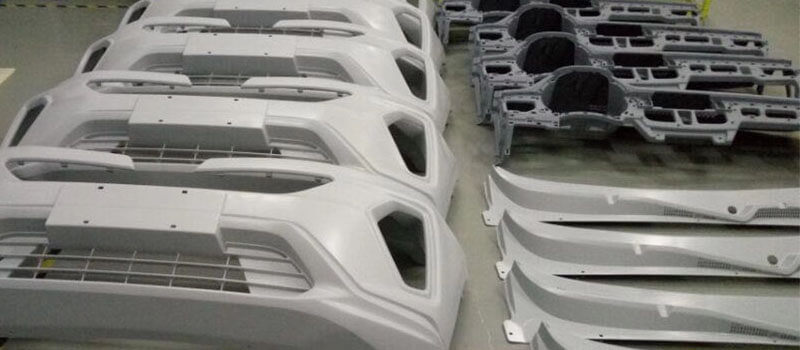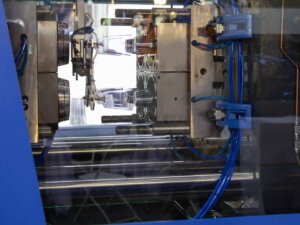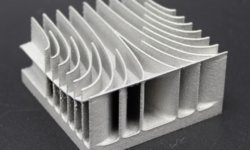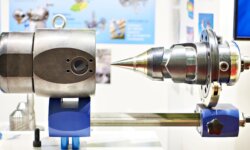3ERP offers a wide variety of prototyping processes, from industrial-grade CNC machining to FDM 3D printing. For small volumes of plastic parts, however, businesses are often torn between injection molding — a commonly used process in which molten material is injected into a metal mold — and vacuum casting, in which more affordable silicone molds are used to create smaller quantities of plastic parts.
Injection molding and vacuum casting are both very useful processes. Both are widely used in the prototyping world, and each offers a distinct set of advantages. However, because the processes share certain similarities (both are ideal for plastic components; both use a mold with a cavity to fabricate parts, etc.) it can sometimes be difficult to choose between the two.
While it is often best to consult an expert like 3ERP for tailored advice on which manufacturing process is most suitable for a given project, there are certain factors that one can consider when coming to a decision. Getting to know these factors is the best way to understand whether injection molding or vacuum casting is the best process for your project.
What is injection molding?
Injection molding is a widely used manufacturing process in which molten material is injected into a mold. It is used to create large volumes of parts, which can be used in industries like healthcare and consumer products. Chances are you’ll be sitting within arms reach of an injection molded part.
The injection molding process involves heating and mixing material — sometimes multiple materials — in a barrel. The material is melted and then forced into a mold, where it cools and takes the form of the inside of the mold. By repeating this process over and over, the mold can be used to make many identical parts.
While injection molding is generally thought of as a production process, it is also feasible for prototypes. This is largely thanks to rapid tooling, a means of cheaply and quickly creating prototype molds for the injection molding process. Injection molding is, however, not ideal for very small quantities of parts, since even rapid tooling is relatively expensive.
What is vacuum casting?
Although less widely used than injection molding, vacuum casting is an interesting alternative that can be used to make small quantities of a part at a low cost.
The vacuum casting process starts with a master model, which, in 3ERP’s case, is created using CNC machinery. (3D printing can also be used.) This master model is then immersed in liquid silicone, which is cured, cut and separated from the master model.
The cured silicone can then be used as a mold. Casting resin is poured into the silicone mold, while the vacuum removes bubbles and air pockets to ensure a smooth finish. The resin part is cured and removed from the silicone mold, which can be reused around 20 times.
When is vacuum casting more suitable than injection molding?
Since injection molding is more widely used than vacuum casting, many businesses may not even consider the vacuum casting process for their parts. But there are certain situations in which the silicone-based process represents better value for money and potentially higher quality.
Quantity
For very large quantities of parts, it is hard to look beyond injection molding. Although the setup costs for injection molding are high (even with the use of rapid tooling), the unit costs are very low. This means that, when a business needs hundreds or thousands of copies of a part, that initial outlay on the setup is easily recouped through savings on each unit.
On the flip side, not every business needs hundreds or thousands of copies of a part. When smaller number of parts are required — anywhere between a handful and a hundred — vacuum casting may be the better option, since the setup costs are much lower.
Detail
Since its tooling is generally made from high-quality metals, injection molding allows for the creation of more detailed parts than would be possible with vacuum casting. Injection molding can therefore be the better option for highly complex parts.
For simpler parts, particularly those that only need to be made in small numbers, vacuum casting can be preferable. It’s not simply a cheap option though: vacuum casting can offer an exceptionally smooth surface finish, which means simple parts may look better when made using vacuum casting.
Speed & iteration
The low setup costs associated with vacuum casting have positive knock-on effects. If a design needs to be amended at any stage during manufacture, it is much easier and cheaper to alter vacuum casting molds than it is to rework or remake tooling for injection molding.
In general, this means that vacuum casting is often the better choice during the earlier stages of development. In fact, businesses often make early prototypes using vacuum casting, before creating their end-use parts or latter-stage prototypes using injection molding.
Importantly, creating molds for vacuum casting is a faster process than creating tooling for injection molding, which means time-sensitive prototyping jobs for very small volumes can often be better suited to vacuum casting. (Injection molding will be faster for larger volumes.)
Material considerations
Even if all the signs point to vacuum casting, one should remember that some prototypes — particularly those that will be subject to physical testing — need to resemble the end-use part as closely as possible.
Because of this, if a functional part will ultimately be manufactured using injection molding, it may be beneficial to create the prototype using that same process, even if the outlay is greater.
Learn more
3ERP has years of experience in both injection molding and vacuum casting. Find out more about our injection molding services or our vacuum casting services.
Contact us for more information about either process or to discuss a potential project.







